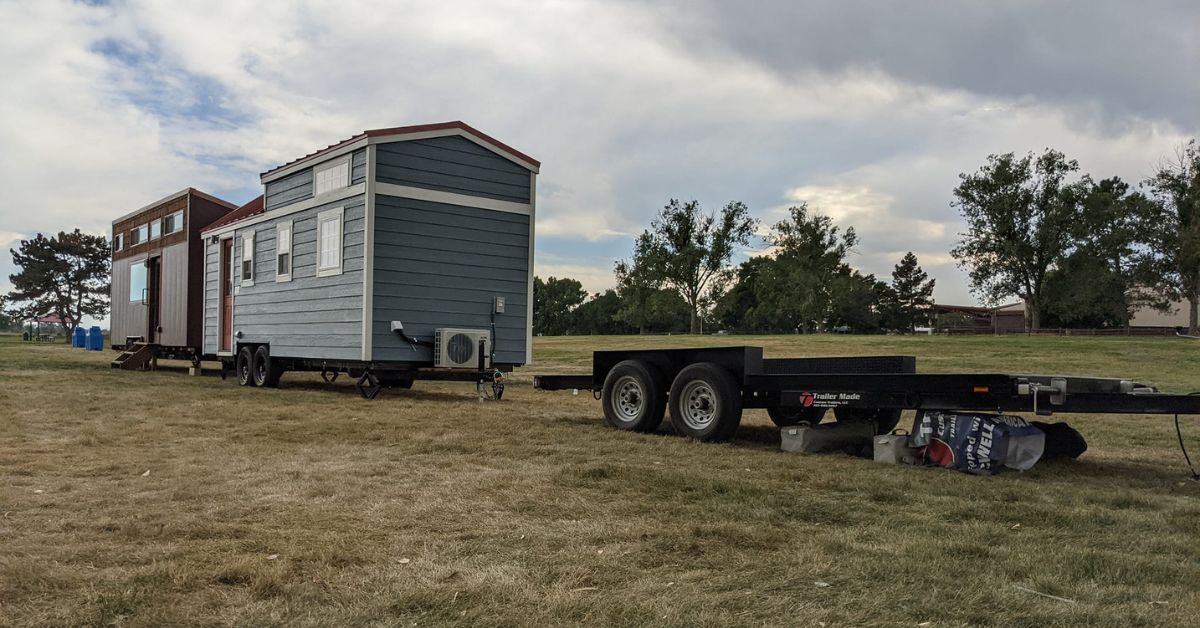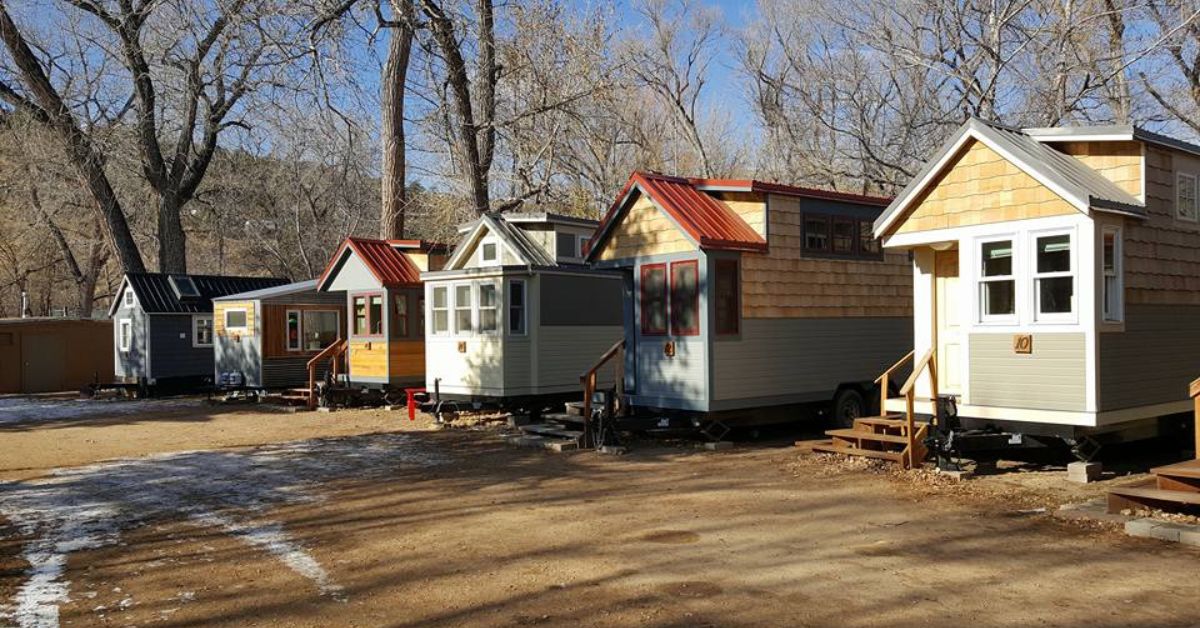The tiny house movement is taking the world by storm. As more people seek simpler, more sustainable lifestyles, tiny houses serve as viable solutions to high living costs, environmental concerns, and the desire for minimalism. But before you jump on the bandwagon, you need to understand what this lifestyle truly entails. Here are all the things you should consider before building a tiny house.
Understanding the Tiny House Concept
A tiny house has less than 400 square feet of living space. These homes come in various forms, including tiny houses on wheels (THOW), stationary tiny houses, and container houses. Each type has its unique features and benefits, but all share the goal of maximizing efficiency in a small footprint.
Tiny houses on wheels (THOW) travel with their owners, making them ideal for those who enjoy a nomadic lifestyle or need to change locations frequently. This mobility allows owners to bypass some restrictive zoning laws and building codes by classifying them as recreational vehicles (RVs).
Stationary tiny houses are permanent structures built on foundations. They offer more design freedom, allowing for diverse architectural styles and incorporating robust utilities and amenities similar to traditional homes. However, homeowners must comply with local building codes and zoning regulations.
Container houses repurpose shipping containers into livable spaces, offering a unique and innovative housing solution. These homes promote recycling and reduce waste by reusing existing materials, making them environmentally friendly.
Benefits of Living in a Tiny House
Opting for a smaller living space offers awesome advantages.
- Building and maintaining a tiny house is significantly cheaper than a traditional home. You save on construction costs, utility bills, and property taxes.
- Tiny houses have a smaller carbon footprint, use fewer resources, and often use sustainable materials.
- A tiny house encourages a minimalist lifestyle.

Planning and Preparation
Deciding to live in a tiny home requires thoughtful planning and preparation. The last thing you want is to encounter unexpected challenges that you could’ve avoided with proper foresight. Before moving forward, consider the following key factors.
Your Needs and Lifestyle
Before you start building, evaluate your living habits and space requirements. How much storage do you need? Do you require separate areas for work, leisure, and sleep?
You also need to consider your long-term lifestyle goals. Are you planning to live in the tiny house permanently, or is it a temporary solution? Understanding your timeline will influence the design, materials, and investment in the project.
The more detailed you are in this evaluation, the better you can design a space that meets your needs.
Budget
Creating a budget is a crucial step. Depending on the size, materials, and complexity, costs can range from $20,000 to over $100,000. Factor in expenses for construction, materials, land, and permits. Funding options include savings, loans, and sponsorships.
You should also plan for utilities and other ongoing expenses. Consider the costs of connecting to or setting up off-grid electricity, water, and sewage solutions. Solar panels, rainwater harvesting systems, and composting toilets can add to the initial cost.
Additionally, think about the interior finishes and furnishings. Even in a small space, quality materials, and well-designed furniture can make a big difference in comfort and functionality.
Legal and Zoning Requirements
Legal and zoning requirements are more things you should consider before building a tiny house. Specifically, understanding local building codes, zoning laws, and parking regulations is essential. These rules vary significantly by location and can impact where you can build or park your tiny house.
For example, some areas impose minimum size requirements for dwellings that may exceed the square footage of a tiny house. In these locations, securing permits and approvals can be challenging. Conversely, some jurisdictions accommodate tiny houses by adopting specific ordinances like tiny house communities.
Regardless of your location, always research and comply with regulations to avoid legal issues down the line.
Designing Your Tiny House
Efficient use of space is important for any tiny house, so consider multi-purpose furniture and vertical storage solutions. For example, choose foldable tables and stairs with built-in storage. Use corner spaces and under-the-floor storage to optimize key areas such as the kitchen, bathroom, and bedroom.
When selecting materials and construction methods, choose sustainable and eco-friendly options like reclaimed wood, bamboo, and recycled metal. Decide whether to go the DIY route or hire professionals. DIY offers cost savings but requires significant time and skill, while hiring professionals ensures quality at a higher cost.
Additionally, consider installing energy-efficient appliances and LED lighting to reduce energy consumption. Insulate your house well to maintain a comfortable temperature, and think about installing a mini-split HVAC system for efficient heating and cooling.
Lastly, plan your utilities meticulously. Ensure that your water and waste management systems comply with local regulations. This includes having proper greywater disposal and safe drinking water access.

Common Mistakes and How To Avoid Them
Like any home development process, encountering issues is normal. However, avoiding certain challenges can save headaches (and money) in the long run. Here are a few tiny house mistakes and how to avoid them.
Neglecting Trailer and Foundation Quality
Using a subpar trailer or foundation can compromise the safety and longevity of your tiny house. Ensure you invest in quality, custom-built trailers to support the weight and dimensions of your house. Additionally, properly anchor your structure to the foundation to withstand various weather conditions.
Rushing the Build Process
Rushing through the building process can lead to mistakes and oversights. Take your time and follow a step-by-step approach. Double-check your work at each stage to ensure everything is correct.
Underestimating Costs
Many people underestimate the total cost of building a tiny house by not accounting for all expenses, such as permits, tools, and unforeseen repairs. Create a thorough budget that includes a buffer for unexpected costs.
Skimping on Materials
Choosing cheaper, lower-quality materials to save money can lead to higher maintenance costs and reduced durability. Invest in durable materials that can withstand wear and tear over time.
Moving In and Living in a Tiny House
Transitioning to a tiny house requires downsizing your belongings and adjusting to a smaller living space. This shift requires a change in mindset and strategic organization. Maintaining your tiny house involves regular upkeep tasks to preserve its condition.
Implementing strategies for space management will help you make the most of your home. For example, using multi-functional furniture and maximizing vertical storage can enhance your space. Additionally, joining tiny house communities provides valuable support and social connections by engaging with others who share your passion for tiny living.
Start Your Tiny House Journey Soon
For those serious about building a tiny house, Trailer Made is here to help you. As the Tiny House Experts, we specialize in custom-built trailers. Our expertise ensures that your home foundation is robust and reliable. Ready to start your tiny house journey? Contact us today and prepare to turn your dreams into reality!
